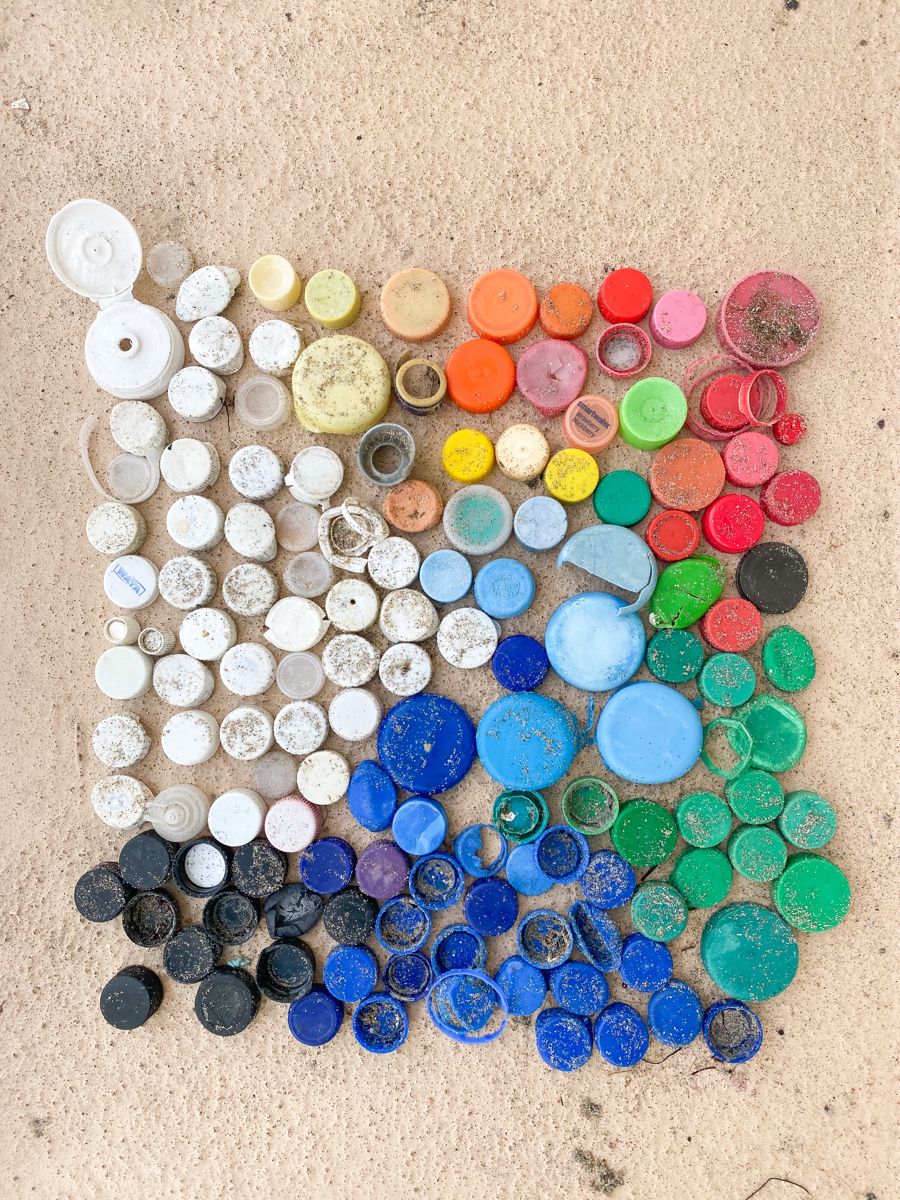
A Small Cap with a Big Recycling Problem
Aren’t bottle caps made of the same plastic as bottles?
Not really. Most bottles are made from PET, which stands for polyethylene terephthalate, while caps are made from different plastics such as polypropylene (PP) or high-density polyethylene (HDPE). These materials cannot be recycled together. If mixed, they reduce the quality of recycled plastic. But in practice, bottles and caps are often thrown away together, which makes separation and recycling more complicated.
Why are caps more likely to get lost in nature?
Because they are small and light. Caps can slip through sorting machines, fall off during transport, or simply get blown away by the wind. Once they reach rivers or oceans, they can travel far. Many studies have found caps inside turtles, seabirds, and even fish, often with deadly results.
Why can’t recycling machines handle caps well?
Recycling plants today rely on machines that sort plastics by size and type. But caps are tiny, and machines often miss them. As a result, they either get thrown away as trash or end up mixed into the wrong stream of plastic. Both outcomes reduce the efficiency of recycling.
What happens if caps are not recycled?
They usually end up in landfills or scattered outdoors. A single cap can take hundreds of years to break down. And instead of disappearing, it breaks into smaller pieces called microplastics that spread through soil, rivers, and even into the food chain that humans rely on.
What can we do about it?
- Recycle bottles with the cap screwed on.
- Use reusable bottles instead of buying single-use drinks.
- Support brands that design “tethered caps” that stay attached to bottles.
- Join community projects that collect and reuse caps to make art, furniture, or useful tools.
A bottle cap may look small, but it represents a much bigger problem. It is made of a different material than the bottle, it is easy to lose, and it is hard for machines to capture. This means that billions of caps escape proper recycling every year, adding to the growing plastic waste crisis. At the same time, it also represents a chance for change. By keeping caps on when recycling, supporting better product design, and choosing reusables in daily life, we can reduce the number of caps that end up polluting our planet. Next time you twist one open, pause for a moment. That little cap in your hand is part of a global story of plastic pollution—and your decision can help write a better ending.
Author: Suzy Liu
